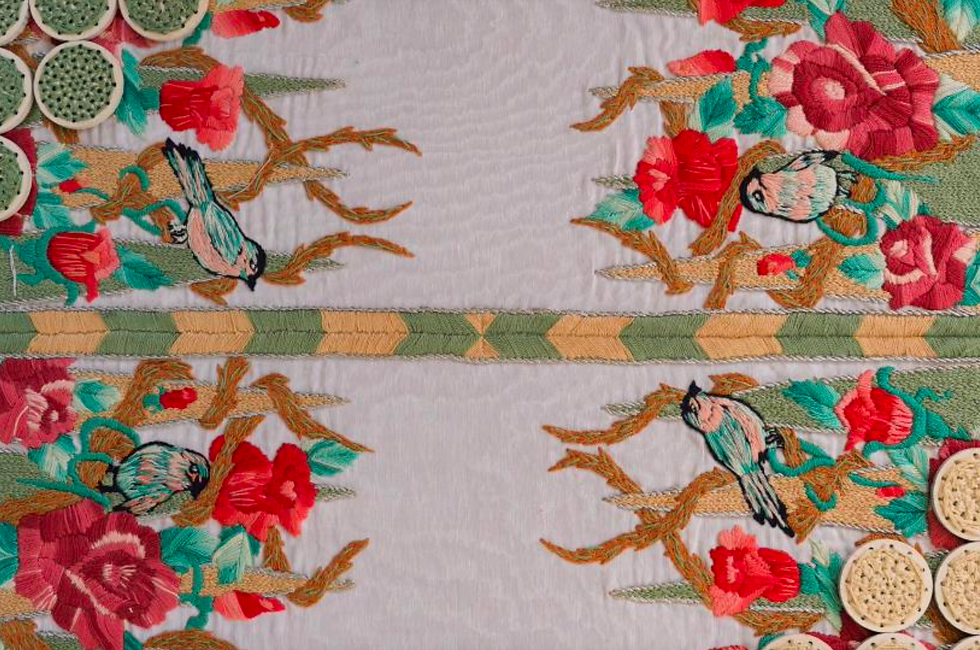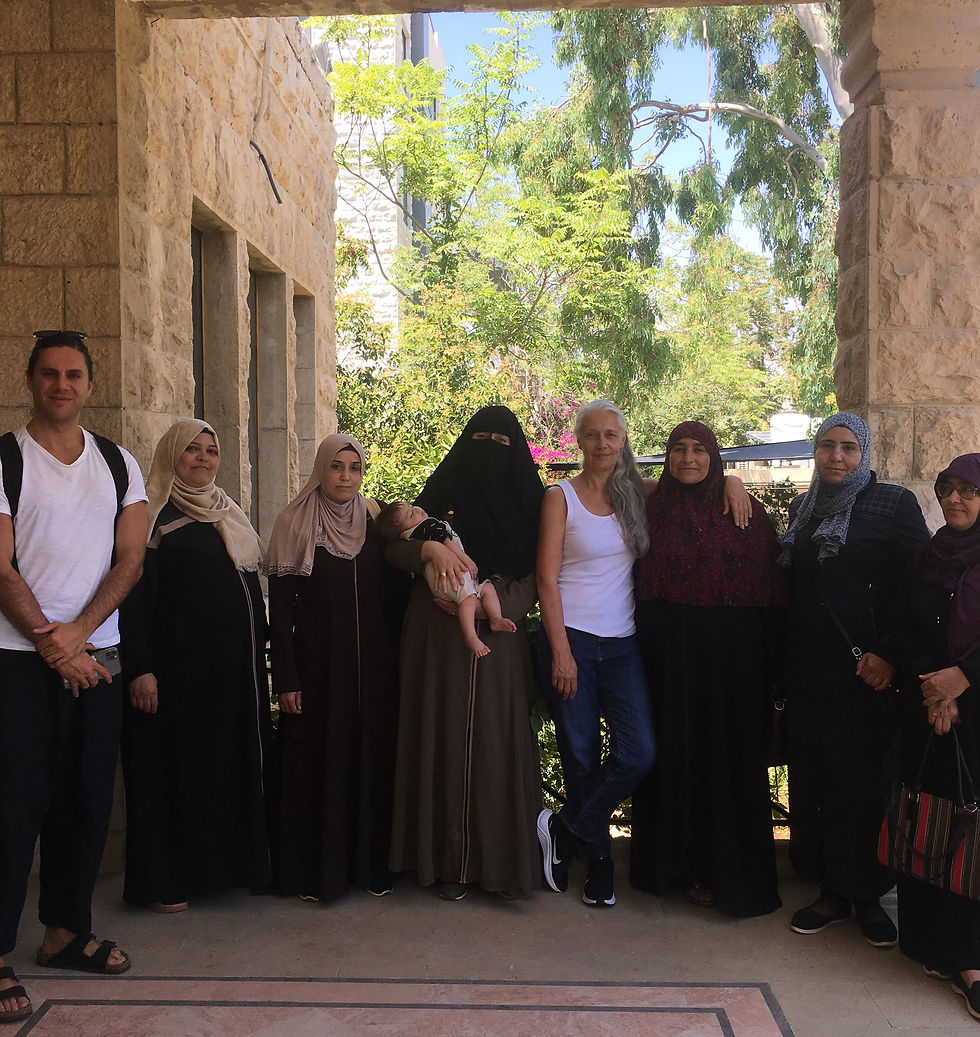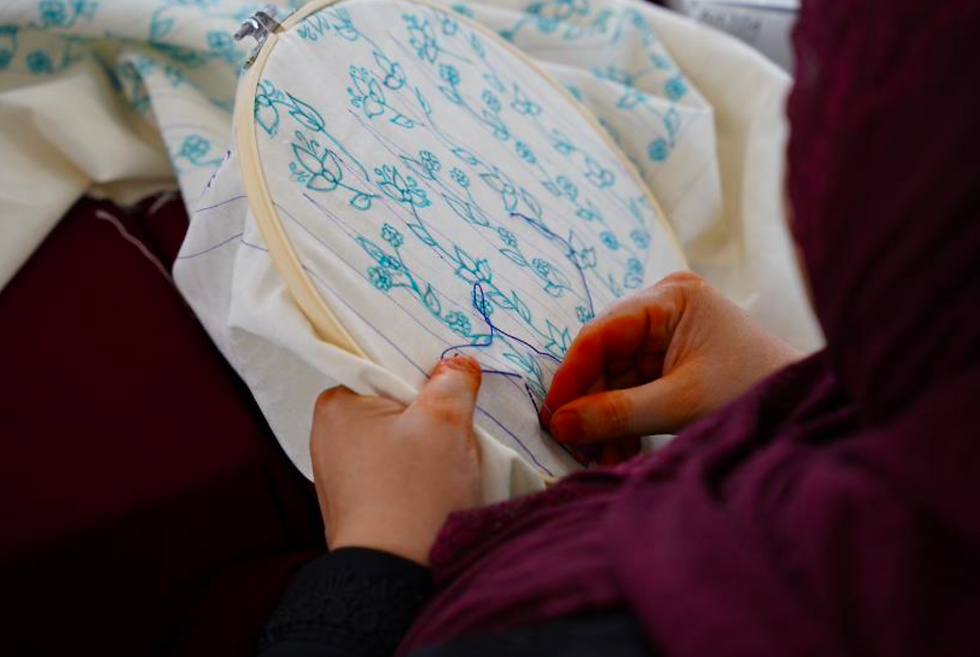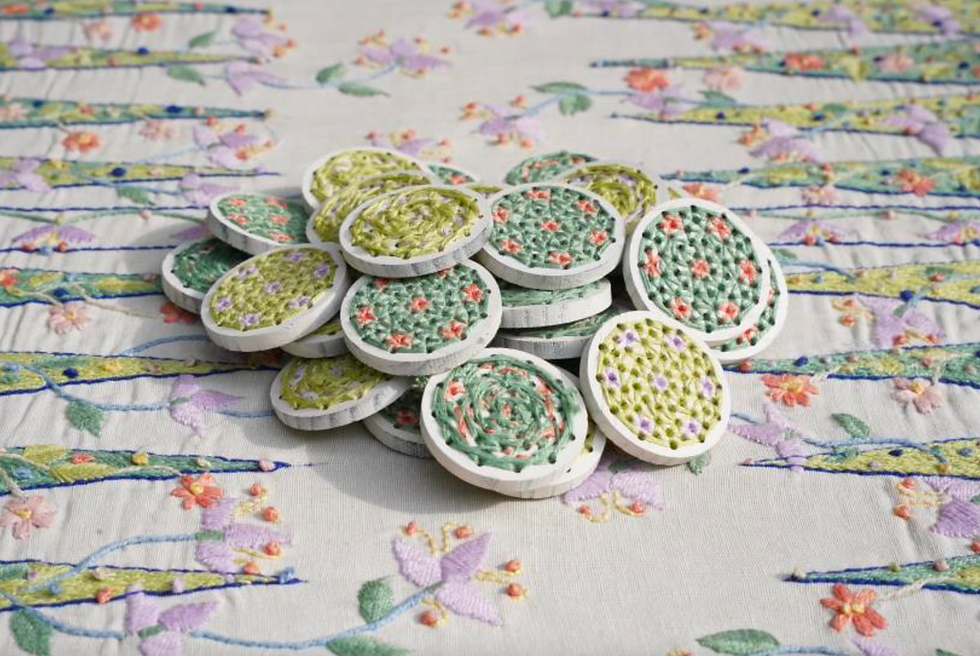Stitching the future and the longing for home
- Prof. Helen Storey
- Jan 23, 2023
- 3 min read

“As a designer working in the humanitarian field, humility, listening and the reimagining of one’s own sense of what ‘progress’ should look like, has been key to carrying on.”
In some ways it feels like it has taken seven years to get to this moment. The possibility of a form of curricular collaboration, which delivers economic freedom for the refugee makers of Zaatari, has always needed to follow the ‘in country’ legal and political path – navigating the freedoms of refugees; those who have fled from war or persecution in Syria.
Every nation and Government that hosts hundreds of thousands of refugees has a different relationship to negotiate when it comes to restrictions on movement, developing livelihoods or employment, and the degree and speed, therefore, to which a life can start to be rebuilt again.
Jordan is amongst the most generous in the world. There is an inherent need to share resources, services, and life opportunities, often in places whose own citizens also need work and a way to provide for their families and futures. It is understandable and the balance is complex. The relationships between the NGOs who oversee the protection and temporary ‘homing’ of refugees in camps and urban settings, has to sit alongside other significant influencing and supportive relationships – such as the World Bank, the World Food Program and multiple other donors and NGOs. All of these factors coalesce around the living of a sensitive humanitarian story that is both public and hidden – politically light, and dark.
What can and can’t be done in the name of collaboration ebbs and flows with the rhythm of the humanitarian sector’s well-known and constant changing of leadership roles on the ground.
We first met the artists and makers in Zaatari in 2016, and much has been created together since – through the spirit raising experience of developing trust, resulting in fifteen rich collaborations. There is enormous gratitude for the inspiration that our refugee friends have almost unwittingly passed onto us through their kindness, hospitality, and ceaseless ambition for their own flourishing, against all the odds.
So how does this link to an embroidery project?
In March 2022, together with Dr Nabil El-Nayal from London College of Fashion and Dr Karen Fisher from the University of Washington, we co-created a workshop in Zaatari Refugee Camp, which brought together thirty of the most skilled female embroidery makers.

With us too, were the incredibly supportive on-the-ground NGO teams, as well as local artists, who used their gifts of imagining and responding in real time, to add unexpected stimuli and materials.
“The finished embroideries shared the most heartfelt stitched stories the ladies wished to tell the world, and for their children too, of the Syria they love and of their current lives.”

From this group, shone many talented women who wished to professionalise their natural gifts, of which six were selected by an international panel of experts to be introduced to Turquoise Mountain. Turquoise Mountain was established in 2006 by His Majesty King Charles III, to revive historic areas and traditional crafts, and regenerate communities with a rich cultural heritage by creating jobs, skills and a renewed sense of pride.

Between August and November 2022, the women attended a number of workshops which began with their personal inspirations, whilst providing a single format that each could respond to – that of a backgammon board.
The backgammon board is one of the oldest two-person board games that can be traced back across the ages and still remains popular in the region today. It is much more than a game, it’s an identity of a culture, a ritual, and a tradition.
The game itself is a constitution of collaboration, integration, competition and harmony between two players; in hindsight, symbolic of the complex weave of relationships lived by the refugees and NGOs together, but intended as a celebration of the collaboration itself – where the memories of the artisans manifested into a unique product of both commercial and renewed cultural value.

The work is being sold internationally for the first time, widening the future economic horizon for the refugee women and their families, as well as cementing a sustainable way to live by their creativity.
“A longing for home has been synthesized into works that can improve their lives away from it, until such time that their return is safe and possible.”
If you wish to support the embroidery ladies of Zaatari, you can order your boards on Turquoise Mountain.








Comments